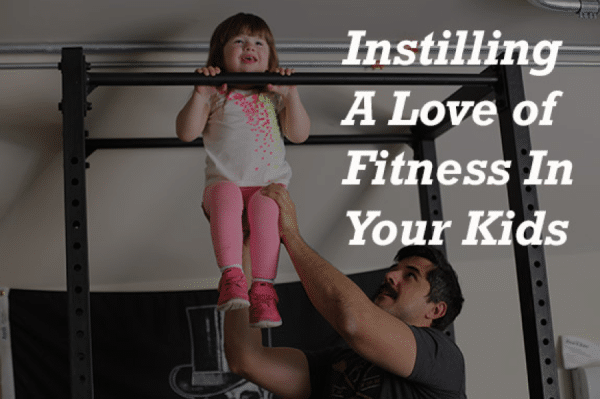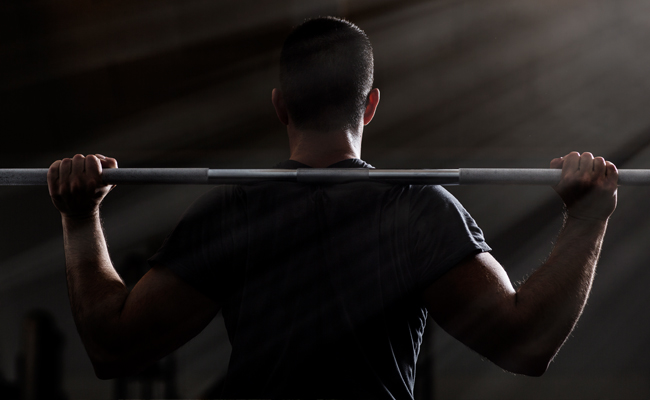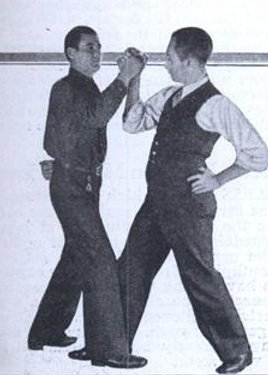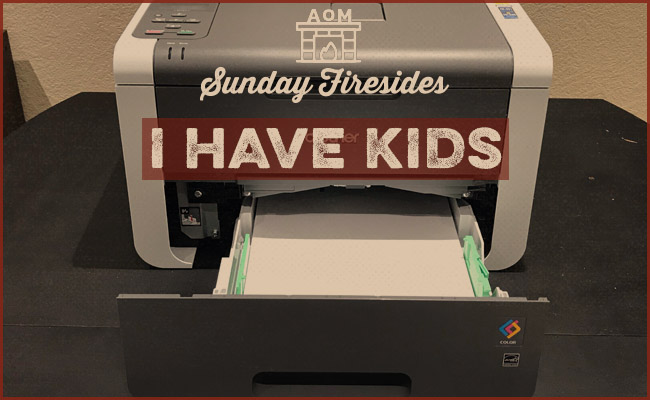
We all know that being active is an important part of a healthy lifestyle. But according to statistics, most Americans aren’t getting the recommended amount of daily physical activity they need for a healthy life.
And the inactivity starts young.
According to the National Health and Nutrition Examination Survey done in 2013, only 42% of kids aged 8-11 are moderately to vigorously active for 60 minutes a day, at least 5 days per week (the activity level recommended by the Physical Activity Guidelines for Americans). That number drops to just 8% for those aged 12-15.
Instead of moving and being active, children spend, on average, over seven hours a day sitting around watching TV or twiddling on other electronic devices. Time spent being sedentary only increases as children get older. And the result of all this sitting around? Research suggests that along with poor diets, our country’s diminishing youth activity level is partly responsible for increasing childhood obesity and type 2 diabetes rates, as well as students’ decreasing cognitive and academic performance.
Sadly, inactive and sedentary children typically go on to become inactive and sedentary adults, increasing their risk for cardiac disease, depression, and diabetes as they get older.
Childhood inactivity has created such alarm, that federal and state governments have invested millions of dollars in the hope of encouraging kids to put down their smartphones and pick up a jump rope. Yet despite all the money thrown at the problem, the effort has only been nominally successful; no kid, if any, starts exercising because they see a television ad encouraging them to get off the couch and move.
Instead, if children are going to start getting more active, the effort has to begin at home — particularly with fathers. If you’re a dad, you’re in a unique position to act as an example and help your kiddos not only become more active now, but grow up into active adults. Today, we’ll show you why that is and how you can leverage your influence as a dad to help your children learn to love moving their bodies and embrace physical fitness.
Want Fit Kids? Be a Fit Dad
Research shows that children in father-absent homes have a higher risk of becoming obese and suffering all the health risks that come with excess weight.
But even if dad is around, it doesn’t necessarily mean his kids will be fit. That depends on how fit he is himself.
Several studies report that dads — more so than moms — have the biggest impact on the overall fitness and weight of their children.
In one, it was found that the father’s, not the mother’s, total and percentage body fat was the best predictor of whether or not the couple’s daughters gained weight as they got older.
Another study showed that a father’s (again, not the mother’s) body mass index is directly related to his children’s activity level. The higher the BMI of the dad, the lower the activity level of the child.
Other studies on mice suggest that a dad’s physical fitness may even influence their children’s health at conception. For example, one study found that obese father rats pass on the genetic traits for obesity to their children. Geneticists speculate that in carrying excess weight, the fat father rats experienced a change in gene expression and passed on that change to their offspring.
Whether you’ve got a fully-formed kid or just little swimmers that will one day contribute to a fully grown kid, your own fitness level is going to have a profound influence on your progeny’s health.
If you want kids who are healthy and active, then you need to be a healthy and active father. If you haven’t found the motivation to lose the 30 pounds you packed on while in college, let this be it: for better or for worse, your physical activity level will impact your children’s health for their entire lives.
Knowing you have such a tremendous amount of influence as a father, what can you do to leverage it in order to instill a love of fitness in your children? Below, we offer a few suggestions.
Exercise Yourself, Duh
Kids are always watching you and picking up cues on how to behave. If they see dad lying around polishing off entire sleeves of Tagalongs, well, your kids are probably going to do the same thing. But, if they see that you regularly exercise and find ways to stay active throughout the day, then chances are, they’ll follow your lead.
So the first thing to do to create a love of fitness in your kids is to lead by example and exercise regularly yourself.
Yes, finding time to exercise gets hard when you have kids, a job, and other adult responsibilities. But if there’s a will there’s a way. Wake up earlier if you have to; sneak in some exercise at the office with the Desk Jockey Workout; use your baby as a piece of exercise equipment.
When you’ve got free time at home, instead of vegging out in front of your computer, get up and do something. Pursue an active hobby like hiking, canoeing, intramural sports, or cycling.

Sometimes Gus and I go for a ruck (walking with a weighted backpack) together down the street and back. My pack’s got a 40-lb. weight, but he just carries a few rocks in his. It’s not something I’ve forced on him; he got curious after seeing me train for and complete a GoRuck Challenge, and now asks to do it too.
Get your kids involved in your activities when you can. Take a family walk around the neighborhood; do some yard work and give your little one a small rake to “help”; go to a park together. Ingrain in your children the sense that, when there’s down time, that’s a chance to get up and move rather than just sit on the couch.
Shoot for at least 60 minutes of moderate to vigorous activity a day. This could be a mixture of planned workout routines and a hodge-podge of other activities like walking, rucking, pick-up basketball, yard work, or roughhousing (see below).
Talk About Your Own Fitness With Them
Another way to create a positive culture of fitness in your home is to make it a regular topic of conversation. You wouldn’t think kids would be interested in the subject, but they surprisingly are.
Both Kate and I share with our kids what we plan on doing for our respective workouts. I tell Gus and Scout what lifts I plan on doing that day, how much weight I hope to lift, and my set and rep schema.
When I’m done with my workouts, they’ll always ask how I did and want to see the videos of my lifts (I record the last set of my lifts to send to my coach Matt Reynolds, owner of Barbell Logic Online Coaching, so that he can critique my form). Even when I don’t complete a set and fall short of my goals, my two-year-old daughter, Scout, will always tell me, “Wow, that’s cool, dad!” Her unadulterated and uninformed enthusiasm unfailingly takes away some of the sting of failure!
Being five years old, Gus is less easy to impress. When I don’t hit a set, he wants to know what happened. So I have to explain to him that it could be that I’m over-trained or that I didn’t get enough sleep the night before. I tell him what I plan to do in my next session so it doesn’t happen again. It’s an opportunity to show him that in life, sometimes you’re going to fail on the path towards your goals. When you do, you don’t get despondent — you re-evaluate and try again.
By regularly talking about my training with my kids, I’m reinforcing a family culture in which physical fitness is an important part of life. Exercising is what keeps us strong and healthy so that we can be useful human beings, as well as enjoy life to the utmost.
Roughhouse With Them
The research has spoken: one of the most important things a dad can do for his children is to roughhouse with them.
We’ve covered before in detail the benefits that come with roughhousing. It makes your kids resilient, smart, and compassionate. It also encourages your kids to be physically active.
Roughhousing is a way to make physical activity fun for your kids, and when you do it with them, you’re providing a direct example of staying physically active in adulthood.
There’s nothing much to roughhousing. Just get on the floor and play with your kids. Wrestle with them, let them climb on you like a horse, chase them around the house. There’s no wrong way to roughhouse. Just keep it safe and fun.
I was very intentional about roughhousing with our kids as soon as they were safely able to do so. What’s heartening to see is that all that deliberate effort at the beginning of their lives has paid off. Now that they’re older, they’re the ones who instigate roughhousing matches. Gus will often come up to me and say, “Do you know what we haven’t done in a while, dad? Roughhousing! Let’s go!” And away Gus, Scout, and I go for a round of upside-down swinging and epic battles between “Achilles and Hector” (roughhousing sessions can even be a time to teach a little ancient Greek mythology!).
Let Them “Play” Gym

A lot of over-zealous fitness bro-dads want to get their kiddos started on a progressive strength-training program as soon as they can air squat with good form. I’ve seen dads boast online that they have their five-year-olds doing Starting Strength.
While you might be chomping at the bit to get your kids going with a structured weight-training program so that they can turn into little beasts, for the sake of the long-term fitness of your children, hold off on it.
For starters, prepubescent children just don’t have the adaptive capacity to keep up with progressive, incremental weight increases with a barbell training program. That ability won’t kick in until they hit puberty.
Second, and more importantly, your kid has the rest of his or her life to train. Setting them up with a regimented program when they’re six years old is just setting them up to burn out on exercise by the time they’re in their 20s.
So if you shouldn’t train your kids when they’re young, what should you be doing with them? Coach Mark Rippetoe sums it up nicely in his usual Rippetoe-ian way: “I don’t personally believe in the ‘training’ of children. Time enough for that sh*t later. Let them play. Please.”
Instead of training your kids in the gym, let them play in it (under your supervision, of course).
If your youngsters tell you they want to try some of the same exercises that you’re doing, by all means let them. If they want to do a barbell squat or deadlift or power clean, show them how to do it with proper technique. (If they’re really young, consider getting them a small barbell that they can manage. Rogue makes a good one.) If they want to do wind sprints with you, have them tag along. Swing a kettlebell? Get a light one for them.
Let your kids do any and all exercises they want to do. Just keep things light, fun, and unstructured. The goal when your kids are young is to make fitness enjoyable.
One of the benefits of having a garage gym is that it makes “playing” gym with your kids a lot easier. When I’m outside with the kiddos watching them zoom around on their big wheels, they’ll often want to take a break from that to go “work out” in the garage. They’ll both take turns doing pull-ups in my power rack. Scout likes deadlifting a small kettlebell. Gus likes doing bench presses with a 10-pound bumper plate and is working on his deadlift with a lady’s bar.
I just let them do whatever they want and provide instruction on how to do the lifts safely and correctly. They’ll have fun playing gym for a few minutes and then they’re back to doing power slides on their trikes.
Am I looking forward to training them? Absolutely. But right now, I’m having a blast just watching them have fun in the gym. And I can take satisfaction in the fact that I’m helping them develop a positive attitude towards fitness. When they’re actually ready to train, they’ll know how to do the lifts, but more importantly, they’ll see exercise as a joy and not a slog.
Get Them Involved With a Sport and Do It With Them
Encourage your kids to get involved with a sport that they enjoy. It’s an opportunity for them to be active, practice nascent athletic skills, as well as learn how to be coachable and work on a team. When they’re young, organized athletics should emphasize fun, play, and learning skills. There will be plenty of time for traveling teams and two-a-days when they’re in high school. So before you sign your kiddo up for a sport, check out a practice or a game. If you see the coaches giving Vince Lombardi-esque, win-at-all-costs pep talks to a bunch of five-year-olds, you might consider another league. While you’re at the games or practices, talk to the parents. Ask about time commitments. If their six-year-old is traveling to different states every weekend to compete, back away slowly and take your kid somewhere else.
Once you find a sport or activity that your child enjoys, get involved with them. Don’t just be a spectator. If your time allows, sign-up to be a coach. If you can’t do that, when you have free time, practice with your child. If your kid is playing baseball or softball, play catch with them. Basketball? Shoot hoops together. If they like running, go on a family run. Again, when they’re young, keep things fun. Don’t turn these father-child sport sessions into drills. The goal is to spend some time with your kid and to show them that even when you’re a grown-up, you can keep playing and participating in sports.
For our family, MovNat (natural movement) has become our shared “sport.” MovNat is a physical fitness method dedicated to helping humans move the way they were designed to move. You learn how to do things like jump, crawl, lift, carry, throw, balance, and hang in the most natural, effective, and efficient way possible. The emphasis is on practical, adaptable movements, done mindfully, and in a variety of contexts.
We signed Gus up for MovNat classes here in town. We liked the idea of starting him off with an activity that emphasizes all-around athletic skill development before he gets involved with a particular sport. He absolutely loves it.
Kate and I decided to get involved and take MovNat lessons for adults, and we’ve both thoroughly enjoyed it. So much so that we’re working to get our Level 1 Certification in May.
The great thing about Kate and I taking formal MovNat classes at the same time as Gus, is that we’ve been able to practice this fitness discipline as a family. Many afternoons at the McKay house, you’ll find us jumping from rock to rock in our garden or doing an army crawl across the lawn. Even Scout has gotten in on the action. Anytime she climbs something, she’s “doing MovNat.”
Conclusion
As a father, you’re in a unique and crucial position to create a culture of physical fitness in your home. Don’t squander it. Lead by example by exercising yourself and finding ways to reinforce a love of physical fitness in your family. Being active should just be something your family does. That attitude will carry on throughout the rest of your children’s lives, and their children’s lives, becoming one of your greatest legacies.
Related Resources
Podcast: Forging Mental Strength Through Physical Strength
Podcast: Why Every Man Should Have a Workout Ritual







